Address
304 North Cardinal
St. Dorchester Center, MA 02124
Work Hours
Monday to Friday: 7AM - 7PM
Weekend: 10AM - 5PM
Address
304 North Cardinal
St. Dorchester Center, MA 02124
Work Hours
Monday to Friday: 7AM - 7PM
Weekend: 10AM - 5PM
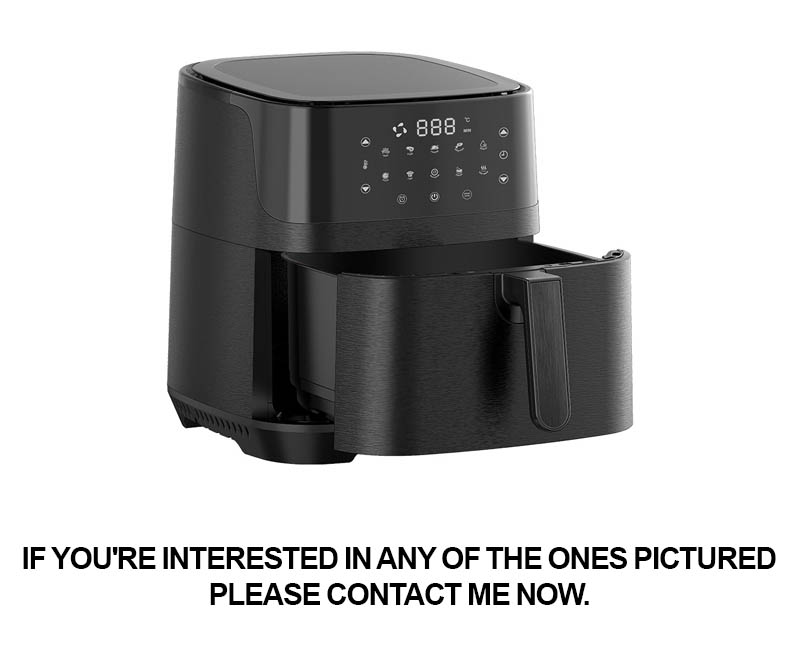
In recent years, the world of juicers has seen a remarkable transformation, driven by the growing demand for healthier lifestyles and innovative technology. As consumers seek out more efficient and aesthetically pleasing kitchen appliances, the role of Original Design Manufacturers (ODM) in shaping the future of juicer design cannot be overstated. This article explores how ODM services are at the forefront of this industry’s evolution, merging form and function to cater to the ever-changing tastes and needs of the modern consumer.
The juicer has been a staple in kitchen appliances for decades, but its design has undergone a remarkable transformation. From the simple, utilitarian models of the past to the sleek, innovative designs of today, the evolution of juicer design reflects changing consumer needs, technological advancements, and a growing emphasis on aesthetics.
Early juicers were often bulky and straightforward, designed with functionality in mind rather than style. These mechanical wonders, driven by gears and motors, were all about extracting juice from fruits and vegetables with efficiency. The design language was minimalistic, focusing on the essential components: the feed chute, the extraction mechanism, and the juice collection area. These juicers were often seen as utilitarian tools, not as objects of design.
As the health-conscious trend gained momentum, so did the demand for juicers that not only worked well but also looked good. The 1980s and 1990s saw a surge in juicer designs that began to incorporate more modern aesthetics. Plastic became a popular material, offering durability and a range of colors. Some brands started to experiment with shapes, introducing curved designs that were both functional and visually appealing.
The turn of the millennium marked a significant shift in juicer design. With the rise of countertop appliances, manufacturers started to pay more attention to user experience and the overall look of their products. Designers began to think outside the box, creating juicers that were not just kitchen tools but also conversation starters. The introduction of sleek, stainless steel finishes and compact sizes made juicers more appealing to homeowners looking for stylish additions to their kitchen countertops.
In the last decade, the evolution of juicer design has been driven by a combination of technology and sustainability. Smart features, such as digital displays and automated cleaning functions, have become standard. However, the real game-changer has been the integration of materials and design elements that prioritize environmental friendliness. Recycled plastics, bamboo handles, and BPA-free components are now common, reflecting a broader commitment to eco-conscious design.
One of the most notable trends in recent years has been the rise of vertical juicers. These compact machines, often with a sleek, futuristic design, have become a popular choice for small kitchens and urban homes. Their vertical design not only saves space but also provides a more stable base, which is crucial for extracting the most juice from fruits and vegetables.
Functionality has also evolved beyond the basic extraction process. Modern juicers now come with a variety of features, such as variable speed controls, adjustable feed chutes, and even built-in pulp ejection systems. These innovations allow users to tailor the juicing experience to their specific needs, whether they’re making smoothies, fresh squeezed juice, or even nut milks.
The influence of technology has extended beyond the juicers themselves. Many brands now offer companion apps that provide recipes, maintenance tips, and even the ability to control the juicer remotely. This integration of technology with design not only enhances the user experience but also positions the juicer as a smart appliance that can add value to a kitchen ecosystem.
Moreover, the evolution of juicer design has been closely tied to the rise of the wellness industry. As people become more aware of the benefits of fresh, raw foods, juicers have become a symbol of healthy living. The design of these appliances often reflects this ethos, with natural materials, minimalist aesthetics, and an overall vibe that suggests a connection to nature.
In conclusion, the evolution of juicer design is a testament to the power of innovation and consumer demand. From simple, utilitarian tools to sophisticated, smart appliances, juicers have come a long way. The future of juicer design promises to continue this trajectory, with even more emphasis on sustainability, technology, and the aesthetic appeal that brings joy to the kitchen.

In the world of juicer manufacturing, Original Design Manufacturer (ODM) services play a pivotal role. These services offer a bridge between the vision of a brand and the tangible product that consumers see on shelves. Let’s delve into what ODM means and how it impacts the juicer industry.
ODM, at its core, is a business model where a manufacturer designs, develops, and produces a product to a brand’s specifications, which is then sold under the brand’s name. This approach allows brands to focus on marketing and sales while leaving the technical and manufacturing aspects to the experts.
The design aspect of ODM is crucial, as it involves creating a product that not only functions efficiently but also appeals to the target market. In juicer manufacturing, this means considering factors such as ease of use, durability, and aesthetic appeal.
When it comes to juicers, design isn’t just about making something that looks good. It’s about creating a user experience that is seamless and enjoyable. ODM teams often conduct extensive research to understand the needs and preferences of consumers. This includes analyzing market trends, studying consumer behavior, and staying abreast of technological advancements.
One of the key benefits of ODM in juicer manufacturing is the ability to customize. Brands can work closely with ODM partners to tailor the design to their specific requirements. This might involve choosing materials, determining features, or even deciding on the color scheme. The end result is a juicer that aligns perfectly with the brand’s identity and the expectations of the consumer.
Another important aspect of ODM is the integration of technology. As juicers have evolved, so too have the technologies used in their design. ODM providers stay at the forefront of these advancements, incorporating features like reverse blades, adjustable pulp ejection, and smart interfaces. These innovations not only enhance the juicer’s performance but also make them more appealing to tech-savvy consumers.
Quality control is a non-negotiable in the juicer industry. ODM manufacturers understand the importance of producing reliable and durable products. They employ rigorous testing protocols to ensure that each juicer meets the highest standards. This includes testing for performance, safety, and longevity.
Collaboration is the backbone of the ODM process. Brands and manufacturers work together throughout the design and production phases, ensuring that every detail is perfect. This close partnership also allows for quick iterations and improvements, which is especially important in a fast-paced market where consumer preferences can change rapidly.
Cost-effectiveness is another advantage of ODM in juicer manufacturing. By outsourcing the design and production, brands can avoid the significant investment required to set up their own design team and manufacturing facilities. This can lead to lower production costs and faster time-to-market.
However, it’s not all smooth sailing. There are challenges to navigating the ODM landscape. Language barriers, cultural differences, and communication gaps can sometimes complicate the relationship between brands and manufacturers. It’s crucial for both parties to maintain open and clear communication to ensure that expectations are met.
Intellectual property (IP) protection is also a critical concern. Brands must ensure that their designs and innovations are safeguarded throughout the ODM process. This involves legal agreements and regular checks to prevent unauthorized copying or use of their intellectual property.
In the realm of sustainability, ODM providers are increasingly being asked to consider environmental impact. Brands are looking for partners who can design and produce juicers that are not only functional but also eco-friendly. This includes using recyclable materials, reducing waste, and minimizing energy consumption during production.
The ODM approach in juicer manufacturing has also been instrumental in fostering innovation. By collaborating with manufacturers who have a deep understanding of the industry, brands can push the boundaries of what’s possible in juicer design. This has led to a variety of niche products, from high-end models with gourmet features to budget-friendly options that cater to a wide audience.
In conclusion, ODM in juicer manufacturing is a dynamic and multifaceted process. It involves a careful balance of design, technology, customization, and quality. By leveraging the expertise of ODM providers, brands can bring unique and competitive products to market, ultimately enhancing their position in the competitive juicer industry.

In the competitive world of juicer manufacturing, the role of ODM (Original Design Manufacturing) juicer design services has become increasingly significant. These services offer a unique blend of expertise, creativity, and technical know-how that can transform a standard juicer into a cutting-edge product. Let’s delve into the various aspects of this crucial service.
The ODM process involves a deep understanding of the market and consumer needs. Designers and engineers who specialize in ODM juicer design services are well-versed in the latest trends and technologies. They conduct thorough market research to identify gaps in the existing juicer market, ensuring that the designs they create cater to unmet consumer demands.
Customization is a cornerstone of ODM juicer design services. Each client has specific requirements, whether it’s a unique aesthetic, functionality, or branding. ODM providers work closely with their clients to translate these needs into tangible designs. This collaboration ensures that the final product aligns with the client’s vision and stands out in the market.
Functionality is paramount in juicer design, and ODM services excel in this area. They incorporate innovative features that enhance the juicing experience, such as variable speed settings, easy-to-clean components, and advanced filtration systems. These design elements not only improve the user experience but also extend the product’s lifespan.
Innovation is at the heart of ODM juicer design. Designers push the boundaries of what is possible, experimenting with new materials, shapes, and mechanisms. This continuous innovation leads to juicers that are not only efficient but also visually appealing and user-friendly. The result is a product that can captivate a broad audience.
Quality control is a non-negotiable aspect of ODM juicer design services. From the initial sketches to the final production, every stage of the design process is meticulously monitored to ensure that the final product meets the highest standards. This attention to detail is what sets ODM services apart and guarantees a product that can be confidently sold to consumers.
Collaboration between ODM designers and the manufacturing team is crucial for a successful juicer design. The designers need to have a clear understanding of the production capabilities and limitations to ensure that the design can be realistically manufactured. This synergy between design and production leads to efficient prototyping and reduces the time to market.
The branding aspect of ODM juicer design services cannot be overstated. A well-designed juicer can significantly impact a brand’s image. ODM providers work with clients to create a design that reflects the brand’s values and resonates with its target audience. This cohesive branding strategy helps in building customer loyalty and trust.
Environmental considerations are increasingly becoming part of the ODM juicer design process. Designers are now more focused on creating products that are sustainable and eco-friendly. This includes using recyclable materials, minimizing energy consumption, and ensuring that the juicer is easy to disassemble for recycling at the end of its life.
The cost-effectiveness of ODM juicer design services is another key advantage. By working with an ODM provider, clients can benefit from the expertise and economies of scale that these firms offer. This often results in a more cost-efficient design that doesn’t compromise on quality.
In today’s fast-paced market, time-to-market is a critical factor. ODM juicer design services are designed to be agile and efficient, allowing clients to bring their products to market quickly. This rapid turnaround time is essential for staying ahead of competitors and meeting consumer demand.
Finally, the adaptability of ODM juicer design services is a testament to their versatility. As market trends and consumer preferences evolve, ODM providers can quickly adjust their designs to keep up with these changes. This adaptability ensures that the juicers they design remain relevant and competitive in the long term.
In conclusion, the role of ODM juicer design services is multifaceted, encompassing market research, customization, functionality, innovation, quality control, collaboration, branding, environmental consciousness, cost-effectiveness, time-to-market, and adaptability. These services are a vital component in the development of successful juicer products that meet the dynamic needs of today’s consumers.
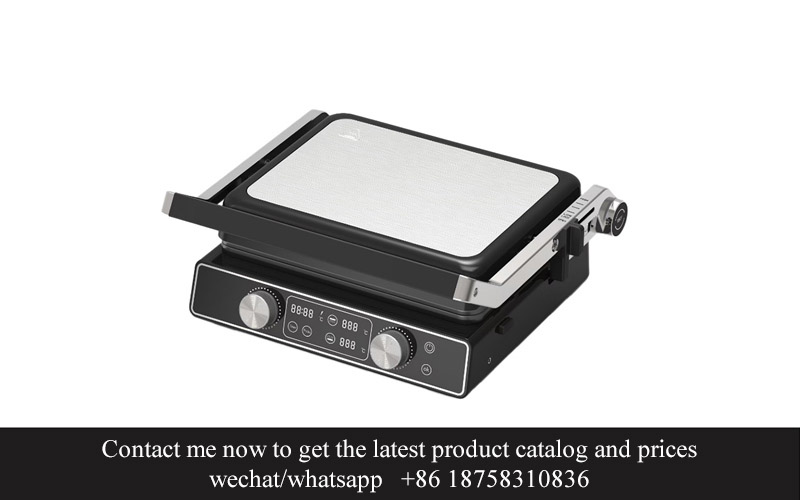
In the realm of juicer manufacturing, the design of an ODM (Original Design Manufacturer) juicer plays a pivotal role in determining its market appeal and consumer satisfaction. Here are the key features that set a top-notch ODM juicer design apart:
Efficient and Quiet OperationAn ODM juicer design that focuses on efficiency is not just about extracting the most juice from fruits and vegetables, but also ensuring that the process is as quiet as possible. The design of the motor, blades, and juice extraction system should minimize noise, providing a seamless and peaceful juicing experience.
Innovative Blade TechnologyThe heart of a juicer lies in its blades. A top-notch ODM design incorporates innovative blade technology that can efficiently chop through a variety of produce, from leafy greens to fibrous roots. High-quality stainless steel blades that are sharp and durable are essential, as they reduce the risk of jamming and ensure a smooth juice flow.
Aesthetic and Functional DesignAesthetics matter in juicer design. A well-crafted ODM juicer not only functions well but also looks attractive on the kitchen counter. The design should balance form and function, with a sleek, modern look that complements different kitchen styles. Ergonomic handles and intuitive controls add to the user-friendliness of the product.
Customizable and VersatileA top ODM juicer design often includes features that allow for customization and versatility. This could mean having different juice extraction settings, such as a pulp control setting or a dual-speed function for soft and hard fruits. The ability to adjust the juice output from a fine to a coarse consistency is also a valuable feature for diverse culinary needs.
Ease of CleaningCleaning is a common gripe with juicers, and a great ODM design addresses this with user-friendly cleaning features. The design should include removable parts that are easy to disassemble and wash by hand or in the dishwasher. Anti-drip mechanisms and non-slip bases are also important for a hassle-free cleaning experience.
Safety FeaturesSafety is paramount in any kitchen appliance, and a top ODM juicer design includes robust safety features. This might involve safety locks that prevent the juicer from operating unless it’s properly assembled, overheat protection to prevent fires, and non-slip feet to keep the juicer stable during use.
Durability and Quality MaterialsA high-quality juicer design is built to last. The use of premium materials, such as high-grade stainless steel for the body and BPA-free plastics for parts that come into contact with juice, ensures that the juicer can withstand regular use and is safe for consumption.
Inclusive User ExperienceAn ODM juicer design should cater to a wide range of users, from beginners to experienced juicers. The design should include clear instructions, simple controls, and possibly a digital display that shows juice output and running time. A user manual that is informative and easy to understand is also a key feature.
Energy EfficiencyWith growing environmental concerns, energy efficiency is a significant factor in juicer design. A top ODM juicer should be energy-efficient, reducing energy consumption without compromising performance. This not only saves money on electricity bills but also contributes to a greener planet.
Smart Technology IntegrationIncorporating smart technology can elevate an ODM juicer design to the next level. Features like Bluetooth connectivity, which allow the juicer to sync with a smartphone app for recipe ideas and usage tracking, or an automatic shut-off function that turns off the appliance when not in use, can make the juicing experience more convenient and efficient.
Eco-Friendly PackagingLastly, the ODM juicer design should consider the environmental impact of its packaging. Using recyclable or biodegradable materials, and minimizing packaging waste, can contribute to a brand’s sustainability efforts and resonate positively with eco-conscious consumers.
These features, when integrated into an ODM juicer design, can make a significant difference in the marketability and user satisfaction of the product. It’s the combination of innovation, functionality, and aesthetics that ultimately leads to a top-notch juicer design.

In the ever-evolving landscape of the juicer market, several trends and consumer preferences have emerged, shaping the way manufacturers approach product design and innovation. Here’s a closer look at some of the key dynamics at play.
The growing demand for health and wellness drives the popularity of juicers. Consumers are increasingly seeking ways to incorporate more fruits and vegetables into their diets, and juicers have become a staple in many kitchens. This trend has spurred the development of juicers that are not only functional but also stylish and user-friendly.
Energy efficiency has become a significant factor in juicer design. With environmental concerns on the rise, consumers are more likely to choose appliances that consume less energy. As a result, juicers with energy-saving features are becoming more common, reflecting a shift towards sustainability.
Smart technology integration is on the rise. Many consumers are now looking for juicers that can offer additional functionalities beyond just extracting juice. Features like built-in timers, digital displays, and even connectivity to smart home systems are becoming more attractive, as they provide a more comprehensive and interactive experience.
The preference for compact and space-saving designs is undeniable. With smaller living spaces and a desire to maintain an uncluttered kitchen, consumers are gravitating towards juicers that are easy to store and take up minimal counter space. This has led to the creation of sleek, space-efficient juicers that can be tucked away when not in use.
Personalization is becoming a key driver in juicer design. Consumers are no longer satisfied with one-size-fits-all products; they want appliances that cater to their specific needs and preferences. This has opened up opportunities for juicers with customizable settings, such as adjustable pulp control and varied speed settings to accommodate different types of produce.
The emphasis on ease of cleaning is a direct response to the reality of busy lifestyles. People want juicers that are simple to dismantle and wash, often looking for models that come with self-cleaning functions or removable parts that can be cleaned in the dishwasher. This convenience factor is a significant draw for many consumers.
Safety is a paramount concern in juicer design. With a variety of accidents associated with kitchen appliances, manufacturers are focusing on creating juicers with safety features like overload protection, non-slip bases, and easy-to-use interfaces. These features not only protect users but also give peace of mind to those purchasing the appliance.
Eco-friendly materials are becoming more prevalent in juicer manufacturing. Consumers are more aware of the environmental impact of their purchases and are actively seeking products made from sustainable and biodegradable materials. This preference is influencing the choice of materials and the manufacturing processes used in juicer design.
Innovation in juicer design often revolves around the extraction process. From masticating to centrifugal, the methods of juice extraction continue to evolve. Consumers are now interested in juicers that offer a balance between efficiency and the preservation of nutrients, with cold-press juicers gaining popularity for their ability to maintain the integrity of vitamins and minerals.
Design aesthetics play a crucial role in consumer choice. Juicers are no longer just kitchen tools; they are also decorative elements that can add a touch of style to any kitchen. The trend towards modern, minimalist designs with sleek lines and premium finishes reflects this shift in consumer preferences.
Lastly, the rise of social media and online reviews has had a significant impact on the juicer market. Consumers are more likely to base their purchases on the visual appeal and perceived quality of a juicer, often relying on influencer endorsements and user feedback found on platforms like Instagram and YouTube.
These market trends and consumer preferences highlight the importance of staying attuned to the evolving landscape of juicer design. By understanding what consumers are looking for, manufacturers can create products that not only meet their functional needs but also resonate with their aesthetic and environmental values.
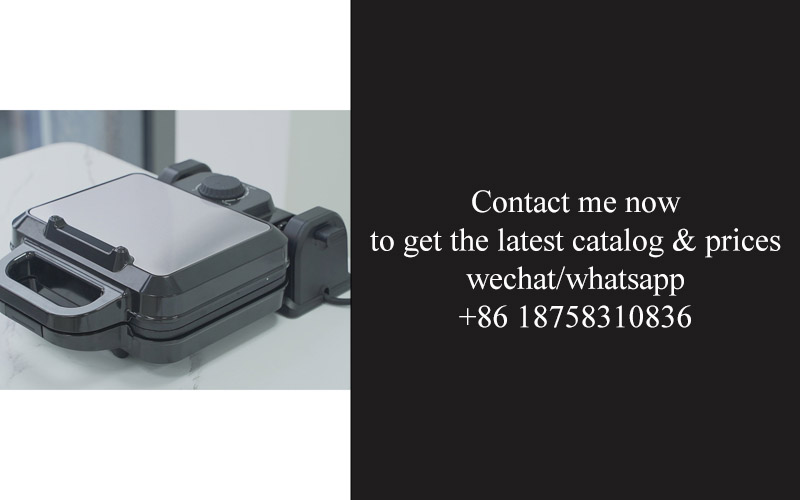
Navigating the initial inquiry, the first step in collaborating with an ODM (Original Design Manufacturer) juicer design service involves providing clear and detailed specifications. This should include your brand’s vision, target market, desired features, and any unique selling points you wish to highlight. A well-defined brief ensures that the ODM understands your expectations from the outset.
Understanding the brief, the ODM will then conduct a thorough analysis of the market and consumer behavior. This research phase involves studying industry reports, competitor products, and consumer feedback to identify current trends and potential gaps in the market. By doing so, they can offer insights into what will resonate with your target audience.
Once the research is complete, the ODM will begin the conceptualization phase. This is where ideas are brainstormed and initial designs are sketched out. During this stage, it’s important to maintain open communication with the ODM, as they may present multiple concepts to explore various design directions.
After the concepts are presented, it’s time for feedback and refinement. This is a collaborative process where you, as the client, provide input on the designs, emphasizing what works and what doesn’t. The ODM will then iterate on these designs, making adjustments to meet your brand’s aesthetic and functional requirements.
With the design refined to your satisfaction, the next step is prototyping. The ODM will create a physical model of the juicer, allowing you to see and test the design in real-world conditions. This phase is crucial for identifying any potential issues that need to be addressed before mass production begins.
Upon approval of the prototype, the ODM will move into the engineering and production planning phase. This involves finalizing the technical drawings, selecting the materials, and establishing the manufacturing process. The ODM will also work with you to ensure that all quality control measures are in place.
During the production planning phase, the ODM will provide you with a timeline and cost estimate. This is the point where you can discuss any adjustments to the scope of work or materials to manage costs effectively. Transparency in this process is key to maintaining a smooth collaboration.
As production commences, the ODM will keep you updated on progress. Regular check-ins will allow you to monitor the quality of the components and assembly process. This ongoing communication ensures that any issues are caught early and resolved promptly.
Upon completion of the production run, the ODM will conduct a final quality inspection. This ensures that all units meet the agreed-upon standards. If any issues arise, the ODM will work with you to find a solution, whether it’s addressing a defect in the manufacturing process or revising the design for future batches.
Once the juicers pass the final quality check, they are ready for shipping. The ODM will coordinate logistics, ensuring that the products are delivered to your warehouse or distribution center. This is also the time to discuss any packaging or branding requirements that the ODM can assist with.
Post-delivery, the ODM may offer additional services, such as market research on how the product is being received by consumers or suggestions for future product enhancements based on customer feedback. This ongoing relationship allows for continuous improvement and innovation in your product line.
Throughout the entire collaboration, maintaining a clear line of communication is essential. Regular meetings, email updates, and project management tools can help keep everyone on the same page. By fostering a strong working relationship with your ODM juicer design service, you can ensure a successful product launch and ongoing support for your brand.
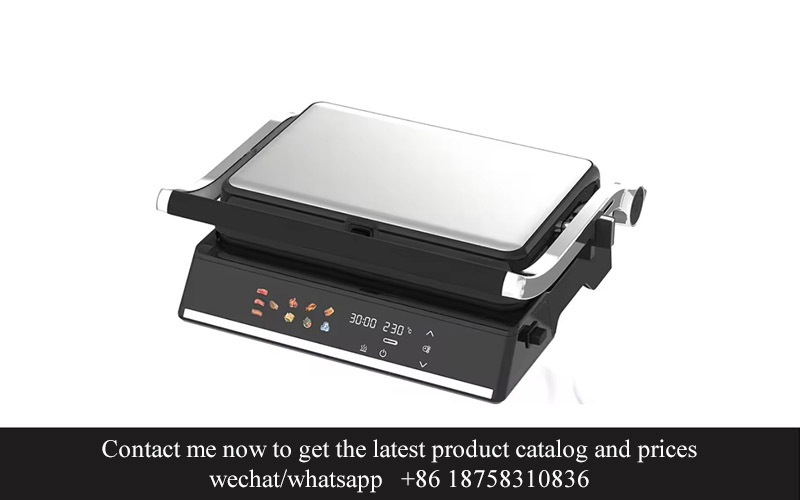
The journey from an initial concept to a fully-fledged product through an ODM (Original Design Manufacturer) process is often marked by innovation, collaboration, and a series of milestones. Let’s delve into some of the success stories and case studies that showcase the power of ODM in the juicer design and manufacturing industry.
In one such case, a small startup approached an ODM company with a vision to create a juicer that not only extracted the most nutrients from fruits and vegetables but also had a sleek, modern aesthetic. The ODM team started by conducting extensive market research, analyzing consumer preferences, and understanding the latest technological advancements in juicing.
The design phase involved sketching out multiple concepts, with each iteration refining the form, functionality, and usability of the juicer. Prototypes were then crafted, with the team focusing on ergonomics and ensuring the product would be user-friendly. The result was a juicer that stood out for its unique blend of power, efficiency, and elegance, capturing the attention of eco-conscious consumers.
Once the design was finalized, the ODM manufacturer took over the production process. This included sourcing high-quality components, managing supply chains, and overseeing assembly to ensure quality control. The end product was not only efficient but also had a robust design that stood up to everyday use.
Another story involves a well-established juicer brand looking to diversify its product line. The brand partnered with an ODM to create a range of specialty juicers, including a cold-press juicer and a citrus juicer with an innovative citrus press. The ODM’s role was to take the brand’s existing design language and translate it into these new products, ensuring they were cohesive with the brand identity while offering something new to the market.
Throughout the development process, the ODM worked closely with the brand to ensure that each feature and functionality of the juicers were carefully considered. The end result was a suite of juicers that catered to specific consumer needs, enhancing the brand’s reputation for innovation and quality.
In yet another case study, a startup specializing in organic produce faced a challenge: how to market a juicer that aligned with the brand’s commitment to sustainability. The ODM was tasked with designing a juicer made from recyclable materials and powered by renewable energy sources.
The design phase involved not only the physical aspects of the juicer but also its entire lifecycle. The ODM focused on minimizing waste during production and making the juicer easily disassembled for recycling at the end of its useful life. The juicer was not only a hit with eco-conscious consumers but also received accolades for its innovative approach to sustainability.
Success stories in the juicer industry often include a deep understanding of market dynamics. For example, an ODM worked with a company to design a juicer that would appeal to health-conscious individuals seeking a more affordable option without compromising on quality. The result was a compact, budget-friendly juicer that was a game-changer in the market, offering high-performance at a fraction of the cost.
In one particularly memorable case, an ODM was approached by a global brand to develop a juicer that could be used in both domestic and commercial settings. The ODM had to create a design that was as durable as it was stylish, capable of handling high volumes of use while maintaining its appearance.
The design process involved rigorous testing to ensure the juicer could withstand the demands of a commercial kitchen. The ODM also worked with the brand to create a range of accessories and attachments to enhance the juicer’s versatility. The final product became a staple in cafes, juice bars, and homes worldwide, thanks to its versatile design and robust build.
These success stories and case studies illustrate the value of collaboration between ODMs and their clients in the juicer industry. By combining creative design, technical expertise, and market insight, ODMs help bring innovative, high-quality products to market, often with a lasting impact on consumer preferences and the industry as a whole.
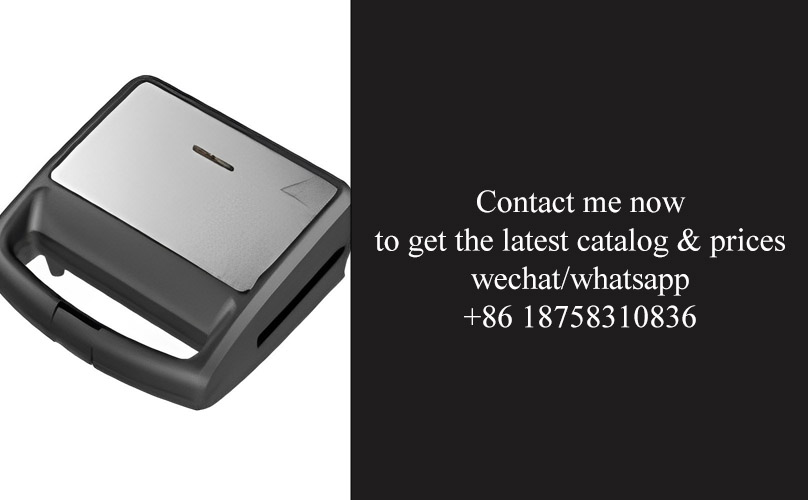
In the ever-evolving world of juicer design, Original Design Manufacturing (ODM) plays a pivotal role in shaping the future of this industry. As consumer demands and technological advancements continue to shift, the way juicers are designed and produced is undergoing a transformation. Here’s a glimpse into the future of juicer design through the lens of ODM.
Innovative Materials and SustainabilityThe future of juicer design through ODM is marked by a shift towards innovative materials that are not only functional but also sustainable. Materials like biodegradable plastics and recycled metals are becoming more prevalent, reflecting a growing awareness of environmental impact. Companies are exploring the use of advanced polymers that offer better durability and hygiene without compromising on the eco-friendly aspect.
User-Centric Design and Technology IntegrationUser experience is at the heart of the future juicer design. ODM services are focusing on creating juicers that are not just efficient but also intuitive to use. This includes the integration of smart technology, such as touchscreens and app connectivity, allowing users to monitor their juicing process and even receive tips for healthier lifestyles. The design is becoming more about personalization and convenience.
Health and Wellness FocusAs health and wellness trends continue to rise, juicers are being designed with a focus on extracting the maximum nutritional value from fruits and vegetables. ODM is pushing the boundaries of juicer design by incorporating features like cold-press technology, which preserves enzymes and vitamins, and multi-speed settings that cater to different ingredients. The future juicer is not just a kitchen appliance; it’s a tool for health-conscious consumers.
Customization and PersonalizationODM services are enabling a new level of customization in juicer design. With the ability to tailor products to specific market segments or individual preferences, manufacturers can offer a wider range of options. This could include different shapes, sizes, and functionalities, allowing consumers to choose a juicer that best fits their lifestyle and dietary needs.
Energy Efficiency and Eco-Friendly DesignsEnergy consumption is a significant concern for consumers and manufacturers alike. The future of juicer design through ODM is likely to see a surge in energy-efficient models. These designs will incorporate advanced motor technology that uses less power while still maintaining high performance. Additionally, the emphasis on eco-friendliness extends to packaging and shipping, with manufacturers looking for greener logistics solutions.
Smart Connectivity and Data AnalyticsJuicers are becoming part of the smart home ecosystem. ODM is facilitating the integration of juicers with other smart devices, allowing for remote control and monitoring through smartphones or voice assistants. The data collected from these smart features can be used by manufacturers to improve their products and provide users with insights into their juicing habits and nutritional intake.
Global Trends and Cultural SensitivityAs the juicer market becomes more global, ODM is essential in adapting designs to different cultural preferences and regional standards. This involves not only aesthetic changes but also ensuring that the products meet safety regulations and are culturally relevant. The future of juicer design will see products that resonate with consumers worldwide.
E-commerce and Direct-to-Consumer ModelsThe rise of e-commerce has opened new avenues for juicer manufacturers. ODM is enabling companies to create direct-to-consumer models that eliminate the need for traditional retail channels. This allows for more control over the design process and the ability to quickly respond to market trends and customer feedback.
The future of juicer design through ODM is a blend of innovation, sustainability, and consumer-centricity. It’s a landscape where the boundaries of what a juicer can be are constantly being expanded, driven by the creative minds behind ODM and the evolving needs of the modern consumer.